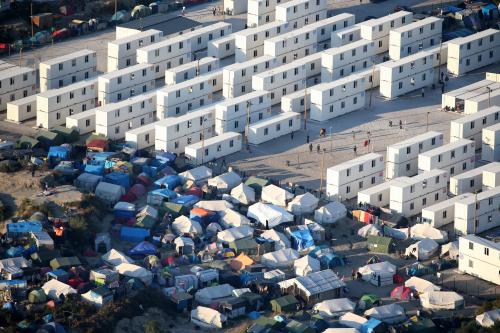Seven is the magic (growth) number
Average living standards double in a decade when annual per capital economic growth reaches 7 percent. Achieving this in least developed countries (LDCs) is a noble objective in countries where a tin roof is sometimes a luxury. Such fast economic growth would help to raise significant resources to finance the pursuit of other goals. This is why such fast economic growth is one of the key Sustainable Development Goals. But it will not be easy—recent economic growth rates would need to more than double to achieve this aim.
During 2000-14, LDCs grew by an annual average of just 3.3 percent per capita. Only six countries in the world achieved 7 percent annual per capita growth and not a single one of them is an LDC. Six countries fell just short of the magic number, achieving annual average per capita growth between 6 and 7 percent. Unfortunately, just three of these are LDCs. One of them, Equatorial Guinea, is lucky enough to have oodles of oil, but the latest poverty data, dating from 2006, places the poverty rate at 77 percent, suggesting the fast economic growth may not be reaching all corners of society.
Overall, you’d be unlikely to do much better betting on fast growth in LDCs than non-LDCs. In total, between 2000 and 2014, just 6.8 percent of LDCs grew at an annual average of 6 percent or above, compared to 5.9 percent for non-LDCs. Non-LDCs were actually more likely than LDCs to reach the magic growth number of 7 percent per year.
More love needed
It’s the conflict that hits growth. There is a strong overlap between LDCs and fragile countries. Of the 48 countries classified by the U.N. as LDCs in 2015, nearly half are considered by the World Bank to be in a “fragile situation.” Unsurprisingly, fragility does not bode well for economic growth.
Fragile LDCs grow more slowly than their stable counterparts. Between 2000 and 2014, fragile LDCs grew at just 1.3 percent per capita on average, compared to 3.3 percent for all LDCs. While eight LDCs achieved over 5 percent annual average growth, just two fragile countries did so—Chad and Afghanistan. Finally, seven LDCs that are also fragile actually had negative GDP per capita growth during 2000-14. Every other LDC at least achieved positive per capita growth, however low.
Figure 1: Overlap and growth rates between LDC and fragile countries

This suggests that reaching the 7 percent growth target in a sustainable way will require countries to be more peaceful than they have been over the last 15 years. While there may be a chicken and egg problem (which came first—the growth or the peace?), it does suggest a need for serious efforts at bringing and securing peace in fragile environments.
Don’t forget those structural reforms
But even peace won’t be enough. Even the non-fragile (i.e., more stable and peaceful) LDCs fell well short of 7 percent average annual per capita growth during 2000-14, and few performed much better than middle income countries. Some of these countries will need to undergo (sometimes difficult) reforms to allow them to sustain and expand growth in the current uncertain international economic climate.
Peaceful LDC fall behind the rest of the world in many structural reforms and each country faces its own challenges. The Doing Business indicators suggest business environment reforms are one of several areas that need to improve to make it easier for firms in LDCs to start, grow, and thrive as employers and exporters. While the average Organization for Economic Co-operation and Development (OECD) country performs nearly as well as the world’s best, even peaceful LDCs lag far behind. Indeed, LDCs have a long way to go to catch up even with other developing countries. And even if we only consider ease of doing business, each country faces different challenges. It is almost as easy to start a business in Mauritania or Zambia as it is in some OECD countries. Yet potential entrepreneurs in Cambodia or Malawi face many more hurdles. It is much easier to get a construction permit in Ethiopia than Lesotho and much easier to secure access to electricity in Bhutan than Bangladesh.
Improving the business environment is just one of many structural challenges the countries face. Limited resources—in money, time, and technical skills—mean that different areas will need to compete. Even the most honest and well-meaning government will need to choose whether to focus on improving the business environment; simplifying taxes, reducing corruption, ensuring better and fairer access to finance, guaranteeing a reasonable level of social protection while maintaining incentives to work, improving education, health, or labor laws, or developing sufficient infrastructure for citizens and firms. And they will face winners and losers, who will fight to keep their piece of the pie. In this regard, reaching the magic number 7 is looking like a tough proposition.






Commentary
Love, peace, and structural reforms: Doubling living standards in least developed countries in a decade
September 20, 2016